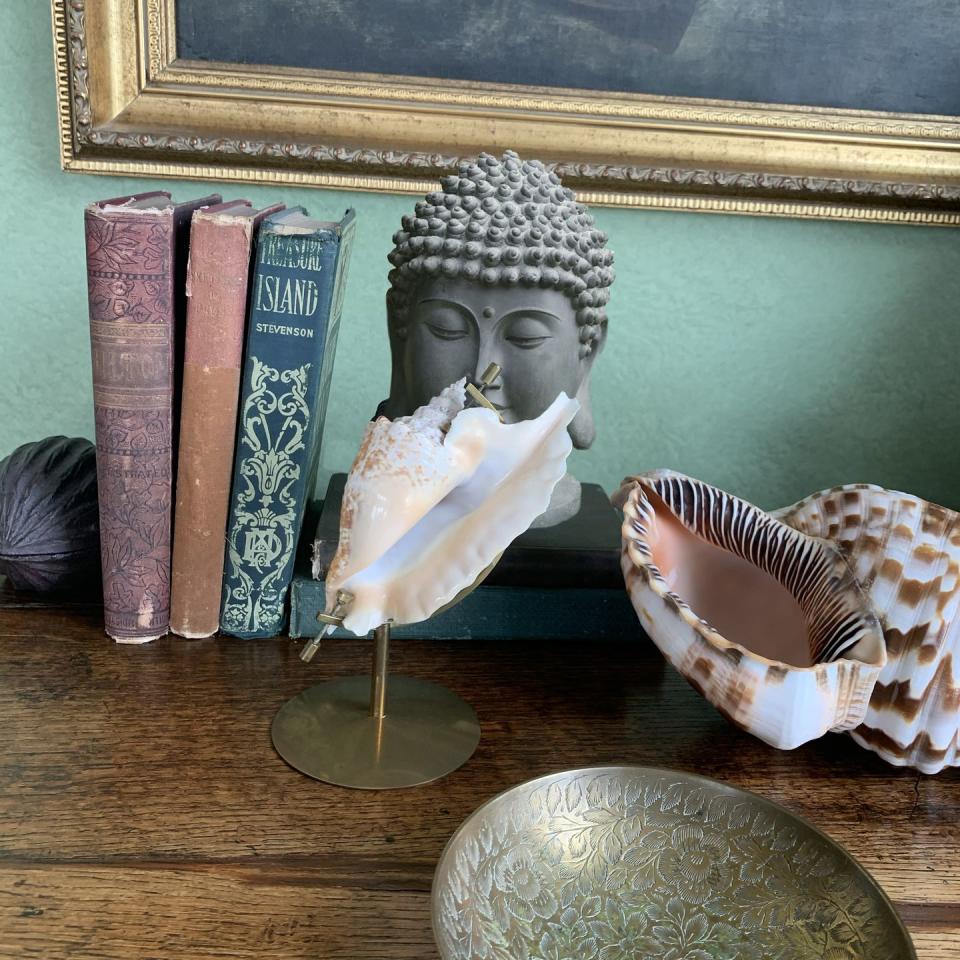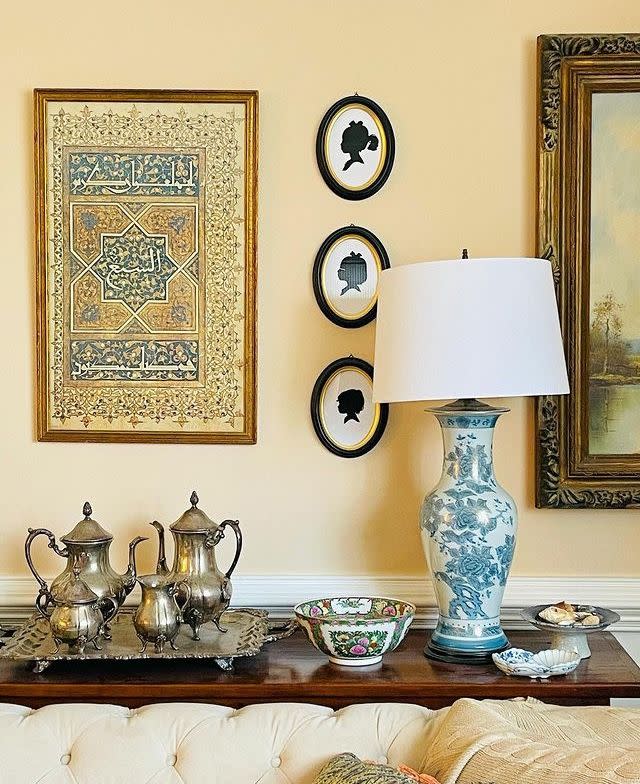Three Designers Share How Religion Influences Their Decor

In the house I grew up in, just about every bedroom has a religious icon hanging on its walls. In Greek, we refer to these images as εικόνα (which is where the word "icon" comes from) and we view these works as a form of protection and safety in our culture. Many icons used by Greek Orthodox Christians are made in Greece and passed down from one generation to the next, and they often display portraits of the Virgin Mary, Jesus, both figures, or saints. The one in my bedroom—a handmade sterling silver creation—was a baptismal gift from my aunt and uncle, brought over from Greece.
Of course, Orthodox Christians are not the only ones who turn to tangible representations of their religion to decorate their homes with—it’s also customary for those who practice Buddhism, Judaism, Islam, and countless other faiths to do the same, in their own ways.
Religious iconography is not a new element in the design world, to be sure. In fact, it's one of the oldest: The phenomenon traces back to more than 1,600 years ago, in the 4th century, when churches were decorated with icons as a way to illustrate worshippers’ religious beliefs and to honor the figures they prayed to. Since then, iconography has become a recurring sight in the world of architecture and design.
Take a trip to sites like the Metropolitan Museum of Art, and you’re bound to come across religious iconography in a number of galleries (not to mention exhibits, like the Costume Institute’s spring 2018 exhibition, Heavenly Bodies: Fashion and the Catholic Imagination, which highlighted Catholicism’s effect on designer fashion). Numerous items in the Met’s permanent collection echo religious influences, like an 11 foot-high Mihrab, or a Muslim prayer niche, made in Iran in the 1350s and composed of mosaic tiles (think turquoise, lapis lazuli, and the like).
Although many centuries have passed since religious iconography first graced the walls of churches across the globe, these items are still commonalities to this day, beyond places of worship.

New York City-based designer Jeffrey Quaritius is currently working with a client of half Asian and half European descent who sought to incorporate family heirlooms in their dwelling in the form of crosses, bibles, buddha sculptures, and jade—the latter of which “represents strength, luck, and invites good health” and is one of the most treasured stones in East Asia, says Quaritius. This eclectic mix of decor “really speaks to the melting pot that is America, which I love,” he adds.
In addition to incorporating religious pieces of decor when designing spaces for clients, Quaritius has also helmed the creation of meditation rooms and prayer rooms. Needless to say, the influence religion has on our homes goes beyond just the tangible, handheld kind.
Fellow Manhattan interior designer Rosie Cohen has also seen the impact religion has on interior design when curating spaces for her own clientele, many of whom practice Orthodox Judaism. As a way to “accommodate a client’s religious needs without compromising style,” Cohen once had a custom bookshelf and work area created to serve as a place for Hebrew scriptures to be displayed and used for daily learning.

Another religious design element in the same home is “a washing sink installed in the kitchen island for ritual hand washing before meals.” As Cohen explains, “the kitchen is oftentimes the center of the home. Mothers work to prepare customary elaborate dishes for the Sabbath held every Friday night through Saturday.” This sink is unique in that it boasts specific features such as “sabbath mode,” which allows for touchless use—an ideal component for Orthodox Jews given that certain objects cannot be touched during the Sabbath. Having two kitchen sinks also makes it possible to separate meat and dairy when preparing meals, since these two kinds of food cannot be eaten together during this period of time.
When it comes to Islamic decor, May Hussein, a Fairfax, Virginia-based interior designer, tells House Beautiful, “Muslims can’t display faces or paintings of people, hence Islamic calligraphy—which usually consists of quotations from the Quran—and Islamic architecture.” She adds, “In a way, for me, it’s a little rebellious [to incorporate Islamic decor] because it’s often appropriated without given credit, unlike European decor. In an English room, for example, there are usually so many Islamic elements that aren’t labeled as such—think Persian rugs and repeated trellis patterns.”
A religious design element that Hussein often incorporates in her own home is a prayer rug. She says that these items are typically “placed on the ground, to make sure that the worshipper is praying on a clean surface” because, “in most Muslim homes, shoes are removed at the door to ensure clean floors all the time, but it’s not a requirement as long as you pray on a clean surface.” Most prayer rugs feature what is called a niche design, which represents the mihrab, a semicircular part of a mosque wall wherein Muslims pray. Hussein adds that every prayer rug should face the direction of prayer (also known as the ‘qibla’), which simply means it has to face Masjid al-Haram, the Great Mosque of Mecca.

As many interior designers often do, Hussein tends to take to her Instagram to showcase the spaces she decorates—but she has found the public forum has resulted in some unfortunate reactions to the religious elements of her designs. After losing numerous followers following a post about prayer rugs, Hussein took to Instagram to share her disappointment at the response.
Hussein went on to point out the irony of such a reaction when, she says, many beloved design elements in Western interiors are pulled from Islamic and other non-Western traditions. In light of this, Hussein advises her followers to "please realize that appropriation is deeply rooted in colonialism," an apt reminder to always seek to recognize the true origins of decor items and themes you want to incorporate—and make sure you do so respectfully.
Follow House Beautiful on Instagram.
You Might Also Like

